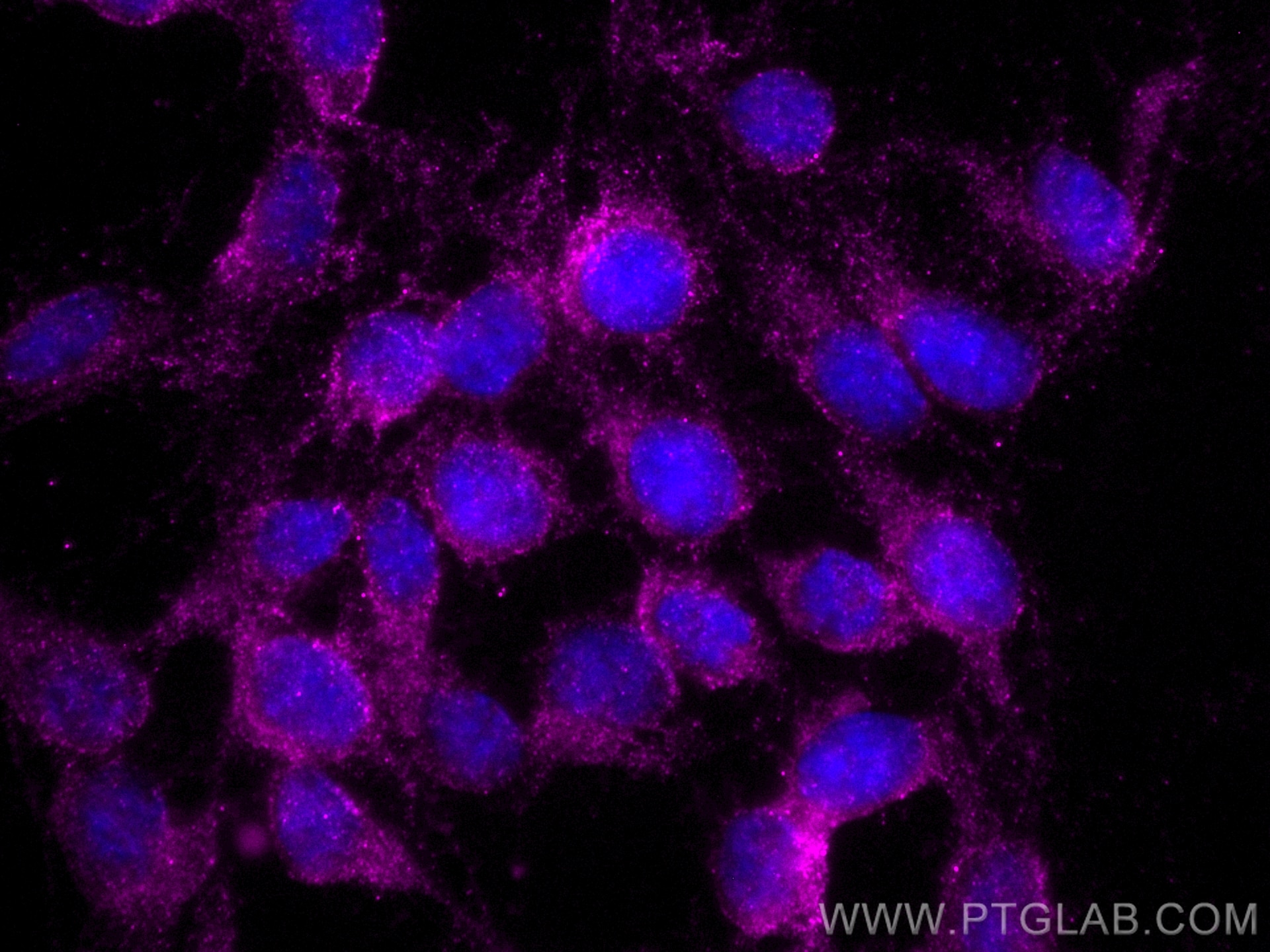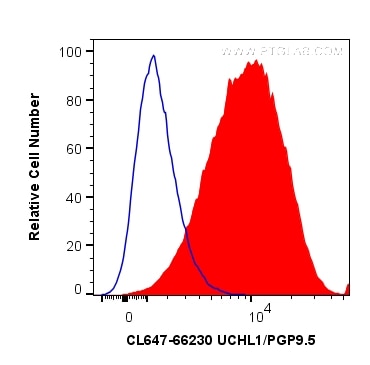- Phare
- Validé par KD/KO
Anticorps Monoclonal anti-UCHL1/PGP9.5
UCHL1/PGP9.5 Monoclonal Antibody for FC (Intra), IF
Hôte / Isotype
Mouse / IgG1
Réactivité testée
Humain, porc, rat, souris
Applications
IF, FC (Intra)
Conjugaison
CoraLite® Plus 647 Fluorescent Dye
CloneNo.
1C9E11
N° de cat : CL647-66230
Synonymes
Galerie de données de validation
Applications testées
| Résultats positifs en IF | cellules SH-SY5Y, |
| Résultats positifs en cytométrie | cellules SH-SY5Y |
Dilution recommandée
| Application | Dilution |
|---|---|
| Immunofluorescence (IF) | IF : 1:50-1:500 |
| Flow Cytometry (FC) | FC : 0.20 ug per 10^6 cells in a 100 µl suspension |
| It is recommended that this reagent should be titrated in each testing system to obtain optimal results. | |
| Sample-dependent, check data in validation data gallery | |
Informations sur le produit
CL647-66230 cible UCHL1/PGP9.5 dans les applications de IF, FC (Intra) et montre une réactivité avec des échantillons Humain, porc, rat, souris
| Réactivité | Humain, porc, rat, souris |
| Hôte / Isotype | Mouse / IgG1 |
| Clonalité | Monoclonal |
| Type | Anticorps |
| Immunogène | UCHL1/PGP9.5 Protéine recombinante Ag6547 |
| Nom complet | ubiquitin carboxyl-terminal esterase L1 (ubiquitin thiolesterase) |
| Masse moléculaire calculée | 25 kDa |
| Poids moléculaire observé | 27 kDa |
| Numéro d’acquisition GenBank | BC000332 |
| Symbole du gène | UCHL1 |
| Identification du gène (NCBI) | 7345 |
| Conjugaison | CoraLite® Plus 647 Fluorescent Dye |
| Excitation/Emission maxima wavelengths | 654 nm / 674 nm |
| Forme | Liquide |
| Méthode de purification | Purification par protéine G |
| Tampon de stockage | PBS avec glycérol à 50 %, Proclin300 à 0,05 % et BSA à 0,5 %, pH 7,3. |
| Conditions de stockage | Stocker à -20 °C. Éviter toute exposition à la lumière. Stable pendant un an après l'expédition. L'aliquotage n'est pas nécessaire pour le stockage à -20oC Les 20ul contiennent 0,1% de BSA. |
Informations générales
Ubiquitin C-terminal hydrolase L1 (UCHL1) was originally identified as a neuronal protein that accounts for nearly 2% of total brain proteins. UCHL1 activity protects neurons from hypoxic injury, and binding of stroke-induced reactive lipid species to the cysteine 152 (C152) of UCHL1 unfolds the protein and disrupts its function. Reduced hydrolytic activity of mutant UCHL1 is implicated in the pathophysiologic process of Parkinson's and Alzheimer's disease due to abnormal neurotoxic protein aggregation. (PMID: 31356902, PMID: 30760601)
Protocole
| Product Specific Protocols | |
|---|---|
| IF protocol for CL Plus 647 UCHL1/PGP9.5 antibody CL647-66230 | Download protocol |
| FC protocol for CL Plus 647 UCHL1/PGP9.5 antibody CL647-66230 | Download protocol |
| Standard Protocols | |
|---|---|
| Click here to view our Standard Protocols |



